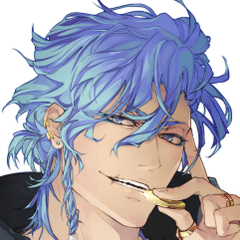Playing Card Commercial Design with Clip Studio Paint
Hi there, my name is Grace. I am a pharmacist but I love to do art. Honestly this is my first digital tutorial ever, inspired by my ‘hunny’ bunny @Futopia!
In this tutorial I will tell you everything you need to know about making a Playing Card commercial design with Clip Studio Paint.
This tutorial is perfect for illustrators, artists, designers, custom art enthusiasts, and everyone who loves the thrill and excitement of getting creative for Playing Card design. If you've ever wondered how to create mirrored top and down Playing Card illustrations, you'll love this stunning, useful guide to the world of Graphic Design or Commercial Illustration inside Clip Studio Paint.
Plus, the tutorial includes an exclusive Clip Studio Paint file (.lip), downloadable for your own use. Happy designing!
1. Preparing The Canvas
In this simple tutorial, let’s start our illustration with A5 size of canvas.
In the [File] > [New] dialog box, I set the [Use of work] at the top to [Illustration] (orange icon).
Then use the following settings for my canvas.
Click OK when you done.
2. Grid Settings
In the [View] > [Grid] make sure to have a tick on it. By doing so, it will help us to see the important grid to design our illustration later.
When you’re done, there is also another important setting to do a trick of figuring out where’s the center of canvas (since Clip Studio Paint doesn’t have an ability to find the center part of our canvas up to this version) it’s called [Grid Settings…]
3. TRICK! Finding The Center of Canvas
Here’s the tricky part, we need to choose the Center of [Diagonal point of grid ruler] to allocate where’s our center canvas. IMPORTANT! Whenever you’re clicking OK. The ‘x’ mark will disappear. So, keep in mind and focus where the center (x) before closing the dialog box.
After closing the [Grid Settings…] I prepare the [Direct Drawing] tool and choose [Straight line] with 4.0 Brush size. Leave everything else as default.
4. TRICK! Making Your Own Center Mark
Here’s my trick on keeping the center canvas easy to find for future purpose. On the new layer, I hold shift and place the [Straight line] across the canvas (from left to right and top to bottom) as you see on the image below. Once again, you need to remember where the ‘x’ mark is.
5. Symmetrical Ruler
Now head on to [Ruler creation] and choose [Symmetrical ruler] with the Number of lines set to 2 and check if the [Line symmetry] already unchecked.
I zoomed in my canvas to 1600% and find the straight lines center from Layer 1 with 20% opacity.
I create the Layer 2 on top of Layer 1 to put my symmetrical ruler.
With left click button on mouse, we put the ruler on Layer 2 (blue triangle icon will appear afterward).
6. Mirror Mirror Hanging on the Canvas
Now it’s time to test something cool, I create that silly image to represent our drawing now has the effect of mirror! Holy bunny!
7. Framing Playing Card
This is another trick I use the [Direct drawing] with [Rectangle] to create the border design of our Playing Card illustration. I set my [Brush Size] to 7.0 (it could be bigger if your screen resolution bigger than mine).
And for the test, I create a new Layer 3 in-between Layer 1 and Layer 2 to put the Rectangle in the center of canvas.
In order to rescale the Rectangle, on your Tool property, uncheck the [Keep ratio of original image] to stretch your rectangle to fit the size of Playing Card. Holding shift on keyboard will also help you to stretch the Rectangle from the same size for its height or wide.
Important Note: My apology that I’m not using the original ratio of Playing Card while making this tutorial or the Rectangle; because at first, I’m focusing to tell you how to find the center trick and mirror the illustration.
8. Illustration Starts Here!
Now using Clip Studio Paint default [Pencil brush], I create my sketch. You can have the .lip file downloadable with this link below ▼
▼ Inking with [Turnip Pen] on new layer on top of my sketch layer.
▼ A simple color blocking on new layer on top of Inking layer will make everything easier later. This technique simply been doing for many aspiring artists worldwide. Using Clip Studio Paint much more versatile than doing it on Photoshop.
I will not talk deeper about Fill tool on Clip Studio Paint as it’s already on Mastering the Fill tool here: ▼
▼ As for this step, I simply create a new layer and then with [Turnip Pen], set Layer mode to [Multiply] and only choose [Standard color set] with ranging of grey colors to paint the shadows.
▼ For this step, I create another new Layer with [Overlay] mode. Then choose lighter grey colors to fill the highlights.
▼ Now for the final part, another new Layer that set to [Add Glow] to finish the glowing effects. Use [Airbrush] tool instead of [Pen] brush. Or you can play with another type of brushes such as [Watercolor] to do extra details or brushing techniques like the hair for example.
Finishing!
And now it’s done! Everything you do will always get the mirror effects! How amazing is that?! Final touch-ups are background colors, highlights on the tomato with ‘Q’ as Queen, with some minor corrections from my side but you’re free to do everything else on your personal custom Playing Card design or illustration inside Clip Studio Paint!
























Comentario